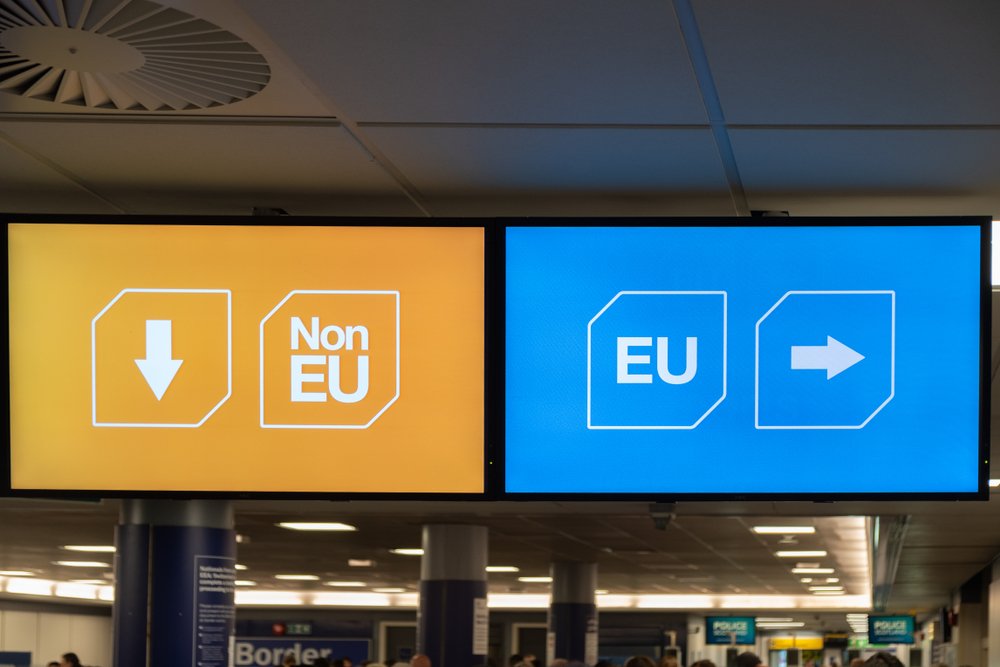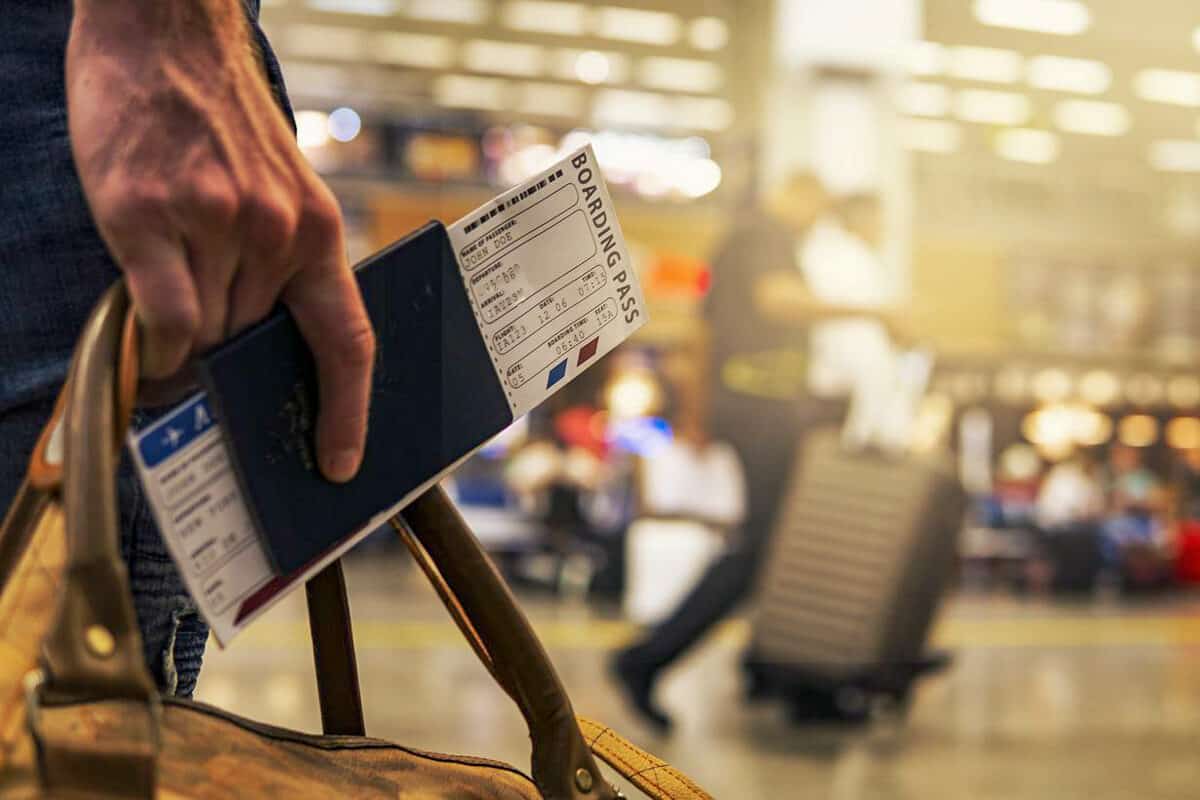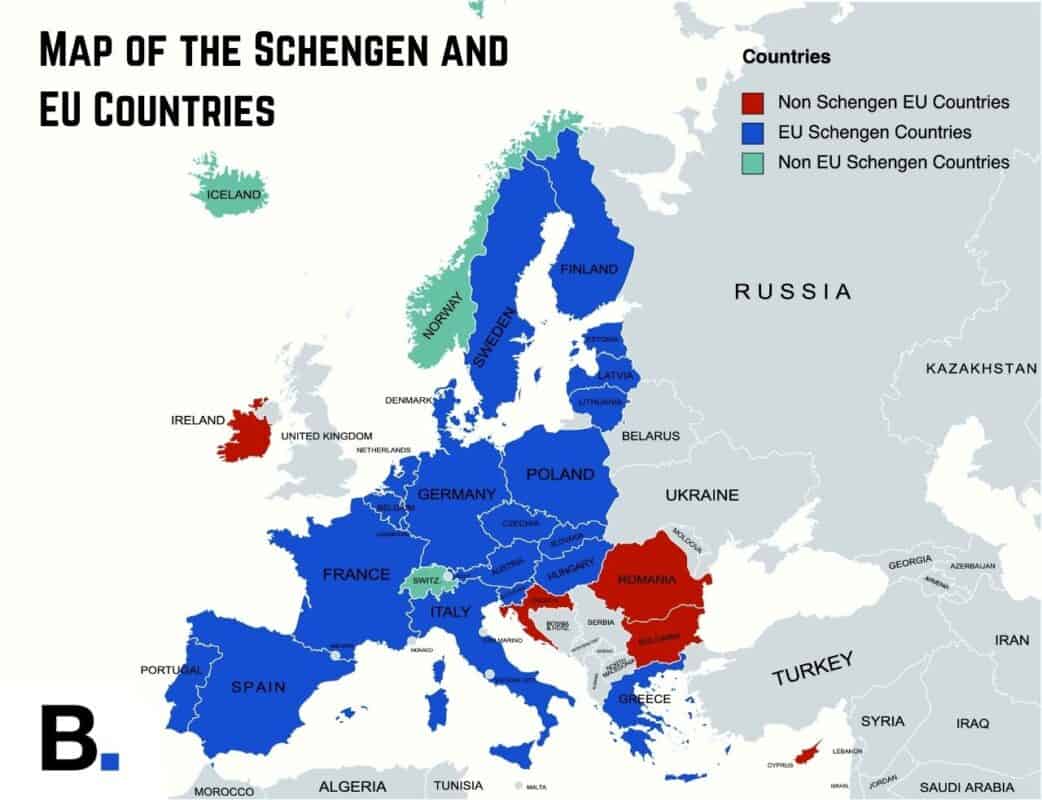Travel documents required for non-EU family members in the EU and Schengen area

Those who are living in the European Union may have family members living abroad. If they’re nationals of a non-EU country, they may need more than a passport to enter an EU country.
It really depends on several conditions, such as the country they’re coming from, the country they want to visit, and what kind of family ties they have with the person receiving them in the EU country.
What is a core family member?
Generally, close relatives of EU citizens are allowed to travel along with them. By law, they have the right to even move with the EU citizen to an EU country. But in order to do this, they must be able to prove that they have an immediate family relationship with the EU citizen. This is what the European Union calls a “core family member”.
- Core family members are:
- Spouse.
- Children.
- Dependent parents.
- Dependent grandparents.
- Civil and registered partners, including same-sex civil unions, in countries that consider civil unions or registered partnerships equivalent to marriage in legal terms.
There can be exceptions for non-EU extended family members under certain conditions but the EU citizen must specifically request it to the host country.
- Extended family members are:
- Aunts and uncles.
- Cousins.
- Siblings.
- A romantic partner in countries where registered partnerships are not considered equivalent to marriage.
How to know if your relatives need a visa to visit you or stay with you
There are cases in which the core family members of an EU citizen may need something more than a valid passport and a document that serves as proof of the family relationship. They may need an entry visa.
Generally, nationals from the third countries on the list of Annex II of the Regulation (EU) 2018/1806 of the European Parliament and of the Council are exempt from the requirement of an entry visa if they’re going to stay in the EU for less than 90 days in any 180-day period.
- These countries are:
- Andorra
- Antigua and Barbuda
- Albania
- Argentina
- Australia
- Bahamas
- Barbados
- Bosnia and Herzegovina
- Brazil
- Brunei
- Canada
- Chile
- Colombia
- Costa Rica
- Dominica
- East Timor
- El Salvador
- Georgia
- Grenada
- Guatemala
- Honduras
- Hong Kong
- Israel
- Japan
- Kiribati
- Macao
- Malaysia
- Marshall Islands
- Mauritius
- Mexico
- Micronesia
- Moldova
- Monaco
- Montenegro
- Nauru
- New Zealand
- Nicaragua
- North Macedonia
- Palau
- Panama
- Paraguay
- Peru
- Saint Kitts and Nevis
- Saint Vincent and the Grenadines
- Samoa
- San Marino
- Santa Lucia
- Serbia (except for holders of Serbian passports issued by the Serbian Coordination Directorate)
- Seychelles
- Singapore
- Solomon Islands
- Tonga
- Trinidad and Tobago
- Tuvalu
- Ukraine
- United Arab Emirates
- United States of America
- Vatican City
- Vanuatu
- Venezuela
Instead of a visa, your family member may enter your country with a residence card as an EU national family member or a residence document issued by an EU country. This enables them to travel together with the EU citizen with whom they have a family relationship, too.
If they have a residence document from a Schengen country, they will need a visa if they’re traveling to Ireland. Other non-Schengen countries (Bulgaria, Romania, and Cyprus) usually consider certain documents equivalent to national visas. Therefore, your family members will not be asked for a visa there if they come from a Schengen country.
Movement is free between Schengen countries as they’ve mutually abolished their internal borders so they won’t need a visa if they come from a Schengen country and you live in a Schengen country, too.
They will need a visa if they want to enter Switzerland with a non-EU family member’s residence card issued by a non-Schengen acquis country.
Those who have an EU family member’s residence card are forced to travel with their EU citizen’s close relative or be traveling to the host country exclusively to join him or her. They can’t use it for tourism or other purposes by themselves.
How to apply for a visa
If your family member needs an entry visa to visit you in your EU country, they can ask for a short-stay visa in the host country’s embassy or consulate. These visas last for 90 days and they’re free of charge. In the Schengen Area, it takes around 15 days to issue them. Non-Schengen countries should issue visas as soon as possible.
Do I Need A Visa To Travel To Europe? European Visa Guide

As you plan for your next trip to Europe, visas may not be the first thing on your mind. However, it is critically important to arrange your European visa ahead of time, to ensure that your trip can go off without a hitch.
Depending on where you’re from, you may be exempt from needing a visa to travel to Europe, but for most travelers, a Schengen visa will be more than sufficient for a backpacking trip.
Although visas for Europe can be tricky to understand at first, by the end of this guide, you will know exactly what you need to do to apply for one.
Related: (opens in new tab)
Disclaimer: The following information reflects Europe Backpacker’s understanding of the Schengen visa rules. While this article has been extensively researched and is updated regularly to ensure the information is as current as it can be, we cannot be held responsible for any errors or omissions.
European Visa Guide for Travelers
Who Needs a Visa To Enter Europe?
In a nutshell, mutual agreements between countries in Europe (and the EU) determine whether or not you need a visa to travel within Europe. As a rule of thumb, most non-EU citizens will require a Schengen visa, but nationals from around 60 countries are exempt. Whether or not you need a visa to enter Europe depends on your country of origin (or which country’s passport you are using to travel.)
You can see a full list here, but many countries in Asia, North America, and South America are exempt from the Schengen visa and can travel through the Schengen bloc visa-free. This includes the U.S., Canada, the UK, Japan, and Australia, among other places.
On the other hand, you may need an airport transit visa to change airplanes within Europe, even if you aren’t leaving the airport. This will depend on your nationality. It’s always a good idea to check the specific requirements for your country of origin.

What Is a Schengen Visa?
The Schengen visa is a ‘short-stay’ visa, which allows the holder to travel within the Schengen Area and other participating countries for a period of 90 days. A big perk of the Schengen area is that you do not have to go through border control procedures between member countries. This means that Schengen nationals can work and live in other member-states, and visitors like you are allowed free movement within your visa’s time frame. Of course, make sure you always have your passport with you – especially when traveling by air, as agents will likely still ask for identification.
The Schengen Area comprises 26 countries in Europe: Austria, Belgium, the Czech Republic, Denmark, Estonia, Finland, France, Germany, Greece, Hungary, Iceland, Italy, Latvia, Liechtenstein, Lithuania, Luxembourg, Malta, the Netherlands, Norway, Poland, Portugal, Slovakia, Slovenia, Spain, Sweden, and Switzerland.
Note that while most of these countries are also members of the European Union, a few aren’t, namely Iceland, Liechtenstein, Norway, and Switzerland. Relatedly, a few EU member-states are not part of the Schengen border-free area, including, Bulgaria, Romania, Croatia, Cyprus, and Ireland. Travel procedures may differ slightly in these countries.
Which Countries Use the Schengen Visa?
The Schengen visa gives you unlimited access to travel within member states of the Schengen Area, as well as several other places. There are several countries that are not part of the Schengen Area but still allow you to travel to them if you have a valid Schengen visa. These include Albania, Belarus, Bosnia and Herzegovina, Bulgaria, Croatia, Cyprus, Georgia, Kosovo, Montenegro, North Macedonia, Romania, Serbia, and Turkey.
The territories of Andorra, Monaco, and Vatican City are technically not part of Schengen but are considered ‘de facto’ members because they do not impose border controls. Interestingly, outside of Europe, a valid Schengen visa also allows you to travel to Colombia, Sao Tome and Principe, Antigua, and Mexico.
Note that requirements vary widely from country to country, so be sure to check the specifics prior to traveling.

Which European Countries Don’t Use the Schengen Visa?
While most countries in Europe use the Schengen visa, there are a few exceptions. Ireland, Moldova, Ukraine, and the United Kingdom do not use the Schengen visa. If you’re visiting these countries, make sure to check what you need to do to get a visa, as it varies depending on the country.
It is important to remember that the United Kingdom is no longer part of the European Union, and travel rules have changed. Be sure to pay special attention to the entry requirements if you’re planning to travel to the UK.
How To Apply for a Schengen Visa
If you are traveling from a country that requires a visa and your primary reason for visiting is tourism (such as a backpacking trip), you will apply for the tourism Schengen visa. Note that there are separate visas for visiting family or friends, business, culture and sport, and studying – if one of these categories better fits your situation, make sure you apply for that type of visa.
You should always apply for a Schengen visa directly from an embassy, consulate, or its designated representative in your country. They may utilize a contractor service to process applications, but the information should be clear and available on their website. Official embassy websites can be found on the European Union’s website here, which is a great place to start the process.
To start your application, there are a few rules of thumb depending on your situation:
- If you are visiting one country, apply for the visa there.
- If you are visiting more than two countries, apply for the visa wherever you will be spending the most time.
- If you will be spending an equal amount of time in each country you visit, apply for the visa wherever you first enter the Schengen area.
The earliest that you can apply for a visa is 6 months ahead of your trip, and the latest is 15 days. Due to different processing times, it’s recommended that you apply at least 3 weeks before you start your journey to ensure you get the visa in time, but earlier is always better!
You will also have to book an appointment for an interview. How and where the appointment is booked varies depending on the country. Some countries require that you make the appointment in-person and then attend in-person as well, while some allow you to make appointments online or over the phone.
At your appointment, you will need to bring two copies of your completed Schengen visa form; your passport; two passport photos; and other items like proof of travel insurance (we recommend SafetyWing), round-trip flight reservation, and accommodation. The visa form is streamlined for all Schengen member-states.
Biometric data (fingerprints) will also be collected, and a photo is taken of you for their system. This data is kept for five years, so if you apply for a second visa in that time frame, you won’t have to give your fingerprints again.
Travel Documents Required for Non-EU Citizens
At a minimum, you will need your passport to travel to Europe. Per EU regulations, it must be valid for at least three months after you leave and must have been issued within the past 10 years. Again, many countries also ask for other documentation in order to grant your visa, which can include proof of lodging, proof of return ticket, or an invitation letter if you are visiting Europe for a particular reason.
You may also be asked to provide proof of travel insurance and proof of health insurance too. While the application form is streamlined, individual countries can request different supplementary documents. Make sure to check the requirements for the country you’re visiting ahead of this step. It’s never a bad idea to supply more information than is strictly asked for if you have it!
How Much Does a Schengen Visa Cost?
A Schengen visa costs €80. This is a flat administrative fee set by the Schengen member countries and does not vary. Once your application is approved, you will receive a sticker to place in your passport. The sticker has your photo, as well as validity dates, the countries you can enter, and a unique visa number.
If you are able to enter the whole Schengen area, it will just say “Schengen States” or “Etats Schengen.” If you are restricted to certain countries, the respective country codes will be listed. This will be a 1 or 2 letter acronym: e.g. Portugal is P, Netherlands is NL.
Remember to apply for your visa only through the embassy or consulate in your country. If they use a contractor or similar service to process applications, they’ll point you in the right direction. Scams are uncommon but do exist. You should be easily able to avoid them if you only communicate with the correct embassy or consulate directly.
It has been announced that in 2023, the European Travel Information and Authorisation System (ETIAS) will be launched. Any traveller who is visiting the EU or Schengen Area visa-free will need to complete an online form that comes with a €7 ($7USD) admin fee per person. This includes travellers from the US, UK, Japan, Singapore and others.

Entry Requirements for Non-EU Citizens
In addition to the travel documents mentioned above, you may be asked to provide means of subsistence. This is proof of income or proof of your ability to sustain yourself financially during your trip.
Authorities may ask you for bank statements or similar to ensure that you can support your activities while in the Schengen area. The amount varies depending on where you are visiting but is often around €50 per day plus the cost of a hotel room. Countries with a higher cost of living will require proof of more funds.
Schengen Visa FAQs
- Do I need a visa to travel to Europe? Whether or not you need a visa depends on where you come from and what countries you’re visiting. Most non-EU citizens will need a visa to visit Europe. Nationals of countries on the exempt list do not need a visa to enter.
- What is a Schengen visa? The Schengen visa is a ‘short-stay’ visa, which allows you to travel within the Schengen Area and other participating countries for a period of 90 days.
- Do UK citizens need a visa for Europe? No, the UK is on the list of visa-exempt countries.
- Do American citizens need a visa for Europe? No, the US is on the list of visa-exempt countries.
- What are common reasons Schengen visa applications get declined? Most declined applications are declined due to an error on the application or suspicion of false data provided (e.g. fake passport.) If you made a mistake on your application, you can appeal the decision with the correct data. Your application may also be declined if you do not satisfy the application criteria, such as proof of means of subsistence.
- Are you required to submit biometric data for a Schengen visa? Yes. In addition to other identification documents, biometric data (fingerprints) will be recorded at your application appointment.
- How long in advance can I apply for a Schengen visa? You can apply up to six months in advance of your trip.
- How much does a Schengen visa cost? There is a flat administrative fee of €80.
When you plan your trip to Europe, don’t forget to check if you need a visa. If you are not an EU citizen, there is a good chance that you will need a European visa, unless you are from a visa-exempt country. Most non-EU citizens will be best served by a Schengen visa. This visa includes the 26 Schengen bloc countries as well as several other places in Europe and offers you free movement between them for 90 days.
It’s not as hard to secure a Schengen visa as you might think – simply follow these steps:
- Check if you need a visa
- If you do, contact the consulate or embassy nearest to you for the country you are seeking to get a visa for and make an appointment
- Fill out the application form correctly prior to your appointment, and print out two copies. Bring the form, your passport, passport photos, and any required supplementary information (proof of lodging, etc.) with you
- When you receive your visa, stick it in your passport
- Enjoy your trip!
What has your experience been like getting a Schengen visa? Any tips we missed? Let us know in the comments!
Entry Requirements to Travel to Europe Without a Schengen Visa

Entry Requirements to Travel to Europe Without a Schengen Visa.
Entry Requirements to Travel to Europe Without a Schengen Visa. Which countries don’t need to get a visa.
Several countries including the United States, Canada, Australia, Japan, New Zealand do not need to obtain a Schengen visa to travel to Europe. In this article you will find answers to the most common questions to make your trip to Europe as straightforward as possible.
For years it has been possible to travel to the Schengen area or zone for tourism, family visit and short stays of up to 90 days without having to obtain a Schengen visa. All this thanks to the exemption agreements that exist between several countries and the European Union.

Paris, France.
What is the Schengen area?
The Schengen area or zone is a free movement and movement of persons treaty among member countries. As of 2022, this zone is made up of 26 European countries. By this I mean that you can travel for up to 90 days to any country in the area without having to arrange a visa for each nation.
If you enter Spain, a popular destination among American countries, you will only go through migration once when you arrive in Europe, and you can leave where you entered or from any other country that is part of this area. These trips or stays are of short duration: for tourism, family, personal or business visits, studies of short courses, seminars, or similar.
The 90 days are counted within 180 days, and cannot be extended.
Countries where you do NOT need to obtain a Schengen Visa
How long can a person be in the Schengen Zone?
The 90 day count starts from the day you have stamped in your passport. For example, if you enter Europe on June 1, 2019, the last day you could leave is August 29, 2019 (June 30 + July 31 + August 29) which adds up to 90 days with the date of the entrance and departure day of the Schengen area.
If you go 30 days, and then travel 20 days to Morocco or another country outside the Schengen area, you may travel again within the Schengen area for 60 more days within 180 days. The count does not start from 0, unless the 180 days from first entry have passed or elapsed.
Which countries can I travel to without obtaining the Schengen Visa?
The countries to which you can travel without having to obtain a Schengen visa are the following:
Austria, Belgium, the Czech Republic, Denmark, Estonia, Finland, France, Germany, Greece, Hungary, Iceland, Italy, Latvia, Liechtenstein, Lithuania, Luxembourg, Malta, the Netherlands, Norway, Poland, Portugal, Slovakia, Slovenia, Spain, Sweden and Switzerland.

Schengen map.
The visa exemption also applies to four (4) European Union member countries that are not currently part of the Schengen Agreement: Bulgaria, Croatia, Cyprus and Romania. You can also go to Andorra.

Schengen Area
To travel to the United Kingdom (England, Wales, Northern Ireland and Scotland) or Ireland (EU Members), you will continue – until further notice – using their individual visa exemptions or requesting a short-term visa at their respective consulates or embassies.
Entry requirements to travel to Europe without the Schengen Visa
Although it is true, you no longer have the need to apply for a visa at the corresponding consulate before your trip, I list below some practical recommendations on the documents or essential requirements, to avoid inconveniences when you check-in with the airline or delays when entering the Schengen area:
Valid Passport
Have a valid passport that is valid at least up to three months after the return date.
Roundtrip transportation ticket
Do not try to travel to Europe without having your round trip ticket because they can deport you or unless you have a European passport. The trip or return flight does not have to be to your place of origin, you can then go to the United Kingdom, Asia, Morocco or another European country outside the Schengen area.
On the Omio website you can search for airline tickets, trains and buses. It is a page that I use very often in my travels around the world.
Accommodation reservation or Invitation Letter from a family member or friend
These documents can be requested from the airline or when entering Europe. Even if they don’t ask you directly, they can ask you questions about it. Do you have accommodation in Spain? Where are you going to stay in your time in Europe? These are some of the questions they have asked my family and friends.
If you have an Invitation Letter, you are almost always asked to show the accommodation you have booked. My mom is always asked for just that and how many days she is going to stay in Europe.
Do not travel without proof of your accommodation to Europe. Keep hotel reservations and/or your invitation letter handy.
Justification of economic means
This requirement depends on whether you have an invitation letter or hotel reservations. According to what I have witnessed, in the zone they demand financial solvency and to demonstrate a minimum of 73 euros a day backed by cash, bank statements, credit or debit cards. If you have an invitation letter it is reduced to half the daily amount.
Schengen Travel Insurance
To enter the Schengen Area it is necessary that your travel insurance has medical coverage of at least 30 thousand euros, in addition to covering eventualities for the entire stay in the State or Member States to visit: You can buy travel insurance with a 5% discount here.
More information
Also, from my experience, with the entry into force of the Schengen visa exemption, the agents of the respective borders reserve the right of admission. Therefore, they can request any of the documents described.
Source https://www.schengenvisas.com/travel-documents-required-for-non-eu-family-members-in-the-eu-and-schengen-area/
Source https://europebackpacker.com/europe-visa/
Source https://elmundook.com/entry-requirements-to-travel-to-europe-without-a-schengen-visa/